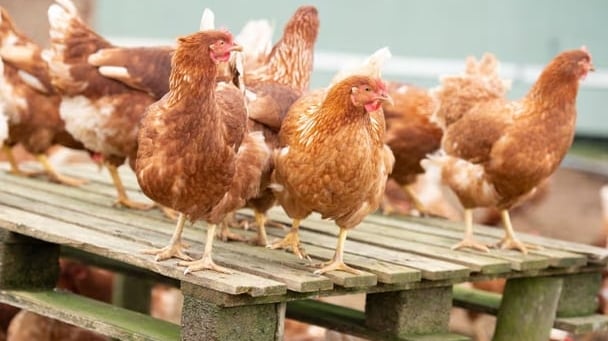May 16, 2025 | 09:54 GMT +7
May 16, 2025 | 09:54 GMT +7
Hotline: 0913.378.918
May 16, 2025 | 09:54 GMT +7
Hotline: 0913.378.918
After a poor showing in 2024, corn and soybean futures values have rebounded sharply to begin the new year, following the release of the US Department of Agriculture’s (USDA) Jan. 10 annual Crop Production and World Agricultural Supply and Demand Estimates (WASDE) reports that offered new pessimism for US supplies.
But with a variety of pressuring features, including the upcoming inauguration of President-elect Donald Trump — and talk of a renewed trade war with China, Mexico and other trade partners transforming toward policy — how long the rally will last is an open question, analysts said.
Bringing the bulls to market was the USDA’s downward revision of 2024-25 forecasts for US corn and soybean carryover, production and yields.
In the WASDE report, the USDA forecast the carryover of corn on Sept. 1, 2025, at 1.54 billion bushels, down 198,000 bushels, or 11%, from 1.738 billion bushels in December. The carryover of soybeans on Sept. 1, 2025, was forecast at 380 million bushels, down 90 million bushels, or 19%, from December.
“The WASDE reports for both corn and soybeans were outright bullish, with the 2024-25 (carryover) estimates for both coming in well below pre-report trade expectations,” said Brian Harris, executive director and owner of Global Risk Management.
Further supporting values and contributing to the lower carryover forecasts, the USDA revised its 2024 corn production estimate to 14.867 billion bushels, down 1.8% from 15.143 billion bushels in December. The average corn yield per harvested acre was downgraded to 179.3 bushels, down 3.8 bushels, or 2.1%, from December.
The 2024 soybean production estimate was revised to 4.366 billion bushels, down 2.1% from 4.461 billion bushels in December. Soybean yield per harvested acre was estimated at 50.7 bushels, down 1 bushel, or 1.9%, from the previous estimate. Soybean production and yield downgrades were “led by decreases for Indiana, Kansas, South Dakota, Illinois, Iowa and Ohio,” the USDA noted in its report.
Since the report’s release, the CME Group nearby corn futures contract has gained more than 20¢ a bushel and is trading at its highest value since June 2024, while nearby soybeans have gained almost 50¢ a bushel, their highest since October 2024. March corn settled Jan. 15 at $4.78¾ per bushel, with March soybeans settling at $10.42¾ per bushel. The May and July contracts have similar gains.
A recent run of dry weather in key corn- and soybean-growing regions of South America, particularly Argentina, has offered additional support for the January rally. An “unusual” and weak La Niña pattern lending its dryness officially developed in December 2024 and is likely to stay in place through April, the National Oceanic and Atmospheric Administration said in a Jan. 9 statement. At least 60% of Argentina’s current corn crop is now stressed as a result, according to recent comments from the country’s Buenos Aires Grains Exchange.
“Argentine production has become more of a question mark now given the recent shift in weather there to warmer and drier,” Harris said.
However, corn- and soybean-growing conditions in Brazil, which is expecting record or near-record harvests this year, have remained mostly favorable as the country’s focus begins shifting toward planting the second, and much larger, safrinha corn crop this month.
In the WASDE report, the USDA left unchanged its forecasts for 2024-25 Brazilian corn production at 127 million tonnes and Brazilian soybean production at more than 166 million tonnes. Analysts at AgResource this week moved their Brazilian corn and soybean production forecasts to 122 million tonnes (slightly lower) and 172 million tonnes (slightly higher), respectively.
“The large Brazilian crops (already) have been factored into prices,” Harris said. “In addition, strength in the US dollar and expectations for lower Chinese corn and soybean imports will be tempering factors to the upside.”
Customs data released Jan. 13 by China, the world’s largest soybean importer, showed its 2024 imports (from all sources) of the oilseed at more than 105 million tonnes, up more than 6% from 2023 and its most on record. Part of that increase, however, resulted from China frontloading soybean imports to get ahead of new trade policies touted by Trump, who has threatened to implement a variety of tariffs once he takes office Jan. 20. A renewed trade war likely would induce China to shift more soybean and corn imports from the United States to South American suppliers, analysts generally agree, though it prefers US soybeans for their higher quality and lower moisture content.
Disappointing export sales numbers released alongside the WASDE report appear to foreshadow such a development. In its weekly Export Sales report, the USDA said net export sales of soybeans in the week ended Jan. 2 for delivery in 2024-25 totaled 288,700 tonnes, a marketing-year low that was down 40% from the prior week and down 72% from the four-week average. Export sales of corn for the same period totaled 445,000 tonnes, also a marketing-year low that was down 43% from a week earlier and down 61% from the four-week average.
Mexico took just 77,900 tonnes of US corn in the week ended Jan. 2 after front-loading imports in recent weeks to get ahead of potential tariffs.
“Mexico was the United States’ largest destination for corn in 2023-24 as it faced a smaller crop due to drought,” the USDA noted in its Jan. 10 Grain: World Markets and Trade report. “The forecast for Mexico’s 2024-25 production is little improved as dryness persists, and Mexico is forecast to import a similar volume of corn as its record-setting amount last year.”
Whether US producers are in a strong position to capitalize on that import demand from their southern neighbor largely will hinge on whatever trade policies the new administration puts in place.
“Given ongoing uncertainty on the Trump administration’s policies going forward and these (USDA) reports, we would state that the March corn contract should trade between $4.50 and $5, with March soybeans between $9.85 and $10.50 over the next few months,” Harris projected. “Both markets will be much more sensitive to spring weather conditions in the US now, and we look for a relatively large shift in planting from soybeans to corn.”
(WG)

(VAN) Japan's efforts to lower the price of rice through the release of its stockpile may finally be making some progress, albeit at a snail's pace.

(VAN) U.S. tariffs are not only a 'shock', but also an opportunity for Vietnamese businesses to renew their mindset toward comprehensive development.

(VAN) As Bac Giang lychee enters the harvest season, Minister Do Duc Duy expects that the fruit will contribute greatly to agricultural exports due to standardized production and deep processing.

(VAN) Consumers have shown a preference for free-range eggs, but those farming systems are more vulnerable to biosecurity risks like bird flu.
/2025/05/09/5701-1-184335_301.jpg)
(VAN) Vietnam’s eel exports nearly doubled thanks to a mud-free farming model, opening up new prospects while still facing numerous barriers related to international standards.

(VAN) Minister Do Duc Duy warned that if production is not professionalized and supply chains are not transparent, the U.S. market could become a growth bottleneck.

(VAN) Delegating surveillance responsibilities to local authorities is a cost-saving and efficiency-boosting measure that removes a key bottleneck for enterprises, according to Director General Duong Tat Thang.